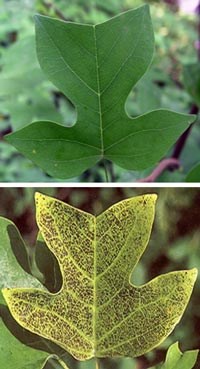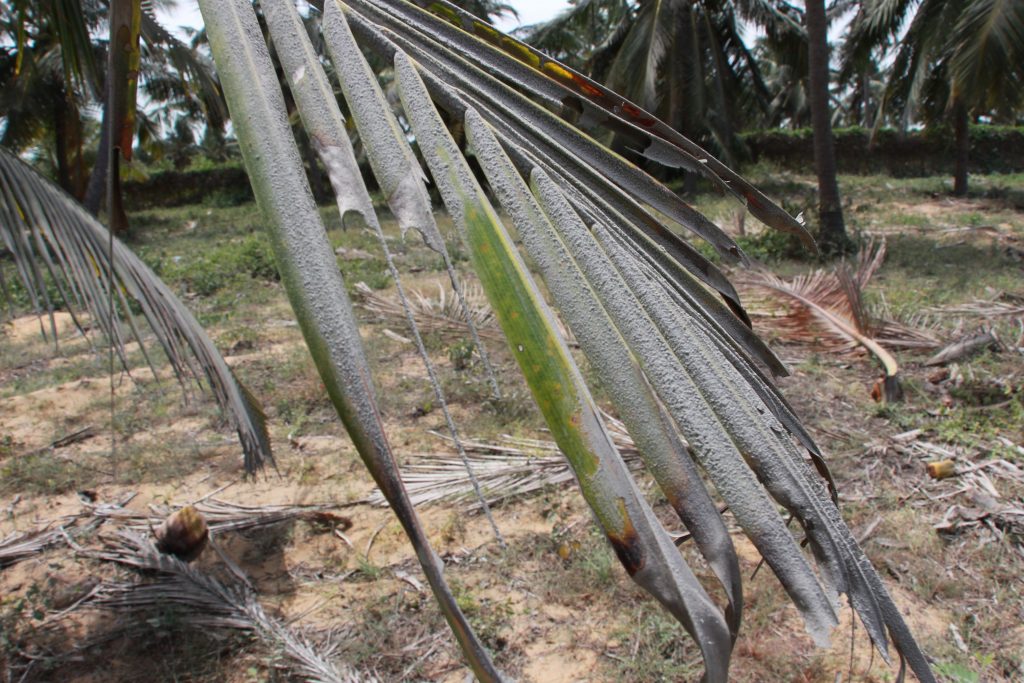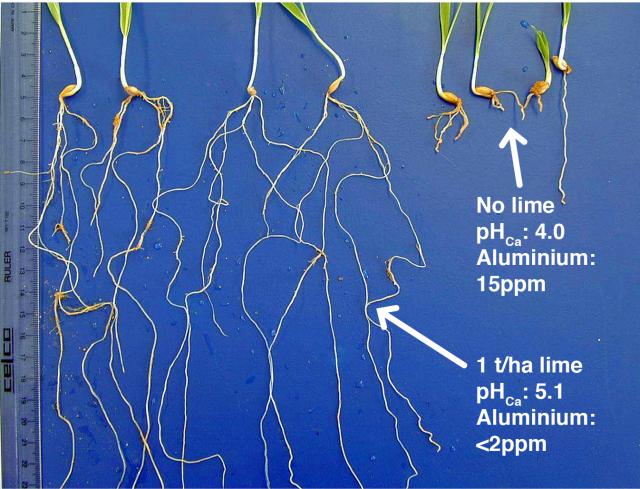Agricultural Impacts
of Air Pollution
Agricultural Impacts
General Overview

Air pollution effects on plants are divided broadly into chronic and acute impacts, together with a range of secondary impacts, including altered sensitivity to other stresses and changes in soil chemistry and microbiology.
Acute effects result from exposure to a high concentration of pollutant over a relatively short time and are manifested in the form of visible symptoms, usually in the form of foliar lesions. Such symptoms are easy to detect but may be confused in the field with similar injury produced by other non-pollutant stresses (Taylor et al. 1986).
In contrast, chronic injury results from prolonged exposure to lower concentrations and is manifested as reduced growth and/or yield, often with no clear visible symptoms. The latter fact makes such injury difficult to detect in the field without using one or more of the experimental techniques outlined in the previous section.
Secondary impacts include changes in sensitivity (invariably in the form of increased damage) due to natural abiotic factors, such as drought and frost, and biotic factors in the form of pest attack or pathogen infestation. Effects via soil include acidification, eutrophication via excess nitrogen deposition and reduction in diversity and number of soil microorganisms, including mycorrhizal fungi.
Air pollution injury to plants can be evident in several ways. Injury to foliage may be visible in a short time and appear as necrotic lesions (dead tissue), or it can develop slowly as yellowing or chlorosis of the leaf. There may be a reduction in the growth of various portions of a plant. Plants may be killed outright, but they usually do not succumb until they have suffered recurrent injury.
How does air pollution affect agriculture?
Effects of Air Pollution on Plants
Air pollution injury to plants can be evident in several ways. Injury to foliage may be visible in a short time and appear as necrotic lesions (dead tissue), or it can develop slowly as a yellowing or chlorosis of the leaf. There may be a reduction in growth of various portions of a plant. Plants may be killed outright, but they usually do not succumb until they have suffered recurrent injury.
There are three major ways in which air pollutants may damage agricultural production:
- Direct visible injury, usually to leaf tissue. If extensive, this can affect crop yield, and superficial damage can make the crop look less appealing to consumers, thus lowering its value.
- Direct effects on growth and yield. Experiments with a range of different pollutants have shown that yields are generally reduced with increasing exposure to pollutants, even in the absence of visible injury.
- Indirect effects. Even at relatively low levels, air pollutants may cause a range of subtle physiological, chemical or anatomical changes which will not lead to detectable yield reductions under optimal growth conditions. However, these changes may increase the crop’s sensitivity to other stresses, thereby contributing to significant yield losses. Exposure to sulphur dioxide and nitrogen dioxide, for example, consistently leads to increased growth rates of a range of aphid pests (Belled et al., 1993).
Effects of ambient urban air pollution on plant pests and pathogens
An important form of stress for plant growth is attack by a wide range of invertebrate pests or infection by pathogenic fungi, bacteria and viruses. There have been many observations over the years of pest and pathogen incidence and performance being changed in polluted urban and industrial locations (Bell et al. 1993).
While such observations do not demonstrate causality, numerous studies have followed them up with controlled experiments, including fumigations, filtrations and transect exercises, which have demonstrated unequivocally that urban air pollution can have marked impacts on the performance of both pests and pathogens. A comprehensive review of this research is given by Flückiger et al. (2002).
In general, insect pests, whether sucking or chewing, show increased incidence in the presence of air pollution, with most evidence pointing towards changes in plant chemistry being the causal mechanism, whereas fungal pathogens show a more mixed range of responses.
Particulate Matter and Dust Coating

Particulate matter such as cement dust, magnesium-lime dust and carbon soot deposited on vegetation can inhibit the normal respiration and photosynthesis mechanisms within the leaf. Cement dust may cause chlorosis and death of leaf tissue by the combination of a thick crust and alkaline toxicity produced in wet weather.

The dust coating also may affect the normal action of pesticides and other agricultural chemicals applied as sprays to foliage. In addition, accumulation of alkaline dusts in the soil can increase soil pH to levels adverse to crop growth.
Dimming of Solar Radiation
While high atmospheric levels of particles known as aerosols are known to adversely affect human health, they can also reduce the amount of sunlight reaching the surface of the Earth, a phenomenon known as “solar dimming.” As less solar energy reaches the surface, evaporation rates decrease. Experts point out that in some cases, increasing pollution can reduce water availability. The solar dimming could reduce evaporation so much that it disrupts the water cycle and ultimately reduce rainfall. The Dimming of Solar radiation may affect the vegetation canopy photosynthesis which may influence the net primary production of crop productions.
The solar radiation reaching the Earth’s surface is the primary driver of plant photosynthesis. Photosynthesis increases nonlinearly with incident photosynthetically active radiation (PAR), saturating at light levels that are often exceeded on bright days during the growing season. Even though the diffuse light due to air pollution (aerosols) and cloudiness can enhance photosynthesis particularly in tall and dense vegetation canopies opposite characteristics with a dominance of the total radiation effect have been found for grassland with low canopies as it has little benefits from the enhanced diffuse fraction, while suffering from the loss in the total amount of sunlight for photosynthesis.
Air Pollution and Groundwater
According to the study conducted by Stefania.S. et al 2017, the rainfalls reduce air pollution in the troposphere, since contaminants are captured and dissolved by raindrops or involved in the formation of particulate matter. Consequently, a fraction of rainfalls, enriched in dissolved ions derived from air pollutants, infiltrates through ground surface and migrates through the vadose zone, contributing to groundwater contamination meaning that pollution moves away from air to surface water and, lastly, to groundwater. Atmospheric pollutants deposition impact on terrestrial and aquatic ecosystems as well as on urban areas and croplands. Estimating this impact could help decision-makers in enhancing policy measures aimed at decreasing pollutants emissions from combustion, agriculture and urban wastes.